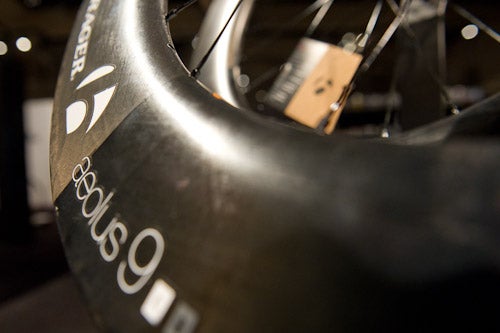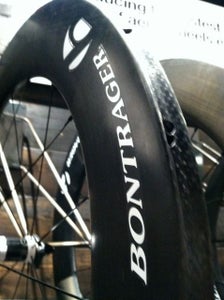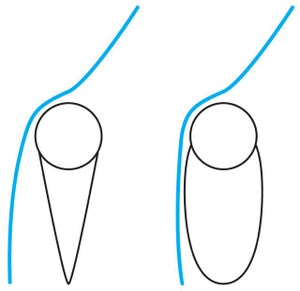Ask Aaron: Why Wide Rims Are Aerodynamic

In this week’s “Ask Aaron”, Aaron explains why wide rims can make for a more aerodynamic wheel. Click here to see past editions of “Ask Aaron.”
Q: Hi Aaron,

I saw Bontrager’s new [Aeolus] aero wheels. Deep rims on aero wheels makes sense to me, but this new generation of wide rims is a little confusing. How are these rims more aero than wheels with thinner rims?
Robin
A: Hey Robin,
There are two primary reasons rim shapes that do not intuitively appear to be aerodynamic do in fact reduce wind drag.
First, a wheel must be aerodynamic with a tire mounted to it.
Narrow rims intuitively seem to be more aerodynamic than broad rims simply because are smaller, but a rim must create an aerodynamically optimized shape when combined with a tire. When hanging on the wall of a bike shop without a tire mounted, this broader rim style appears to increase frontal surface area, but in reality the difference is quite small.
The standard brake track width is 19mm but most tires are 23mm wide. The constraint of riding a comfortable, durable and well-handling tire means that a rim narrower than 23mm doesn’t actually reduce the wheel’s frontal area since the widest point of the tire protrudes past the sides of the rim anyways. Widening the brake track also blends the tire’s shape with the rim and helps create an aerodynamic profile from the tire/wheel system, not just the wheel itself.
Mounting a 23mm tire to a wheel with a 19mm V-shaped rim fundamentally changes the shape of the wheel/tire combination into something resembling an ice cream cone.
Second, it must be aerodynamic over a range of yaw angles, not only with a head-on wind.

Most wind resistance experienced by a cyclist is created by the difference in air pressure between the front and rear of the object. This is called pressure drag. When the object’s leading edge hits undisturbed air, it creates a high pressure zone. If the air flutters offs the back of the object, that creates a low pressure zone. High pressure at the front and low pressure at the rear creates a force on the wheel pulling it toward the low pressure zone at the rear. The bigger the difference between the high and low pressure zones the greater the pressure drag on the object.
An object’s shape can minimize pressure drag by guiding passing air smoothly around and off the object rather than allowing it to flutter uninhibitedly. Deep-section objects tend to create less aerodynamic drag than objects with a short cross section in the direction of airflow because they provide a long surface for the passing air to connect with instead of fluttering behind the object. And since we cyclists ride at relatively slow speeds, we experience a wide range of wind angles and almost never ride with a true headwind. Riding in a crosswind, whether weak or strong, changes the effective shape of the wheel that is presented to the air. The ultra-wide rims of wheels including the HED Stingers, Zipp Firecrest, Smart Enve System 6.7 and Bontrager Aeolus wheels provide a surface for the air to reconnect with rather than fluttering in the space behind the tire. This characteristic is part of the reason this new generation of aero wheels is so fast at wide yaw angles.
– Aaron
Aaron Hersh is the senior tech editor of Triathlete magazine. Follow him @triathletetech.